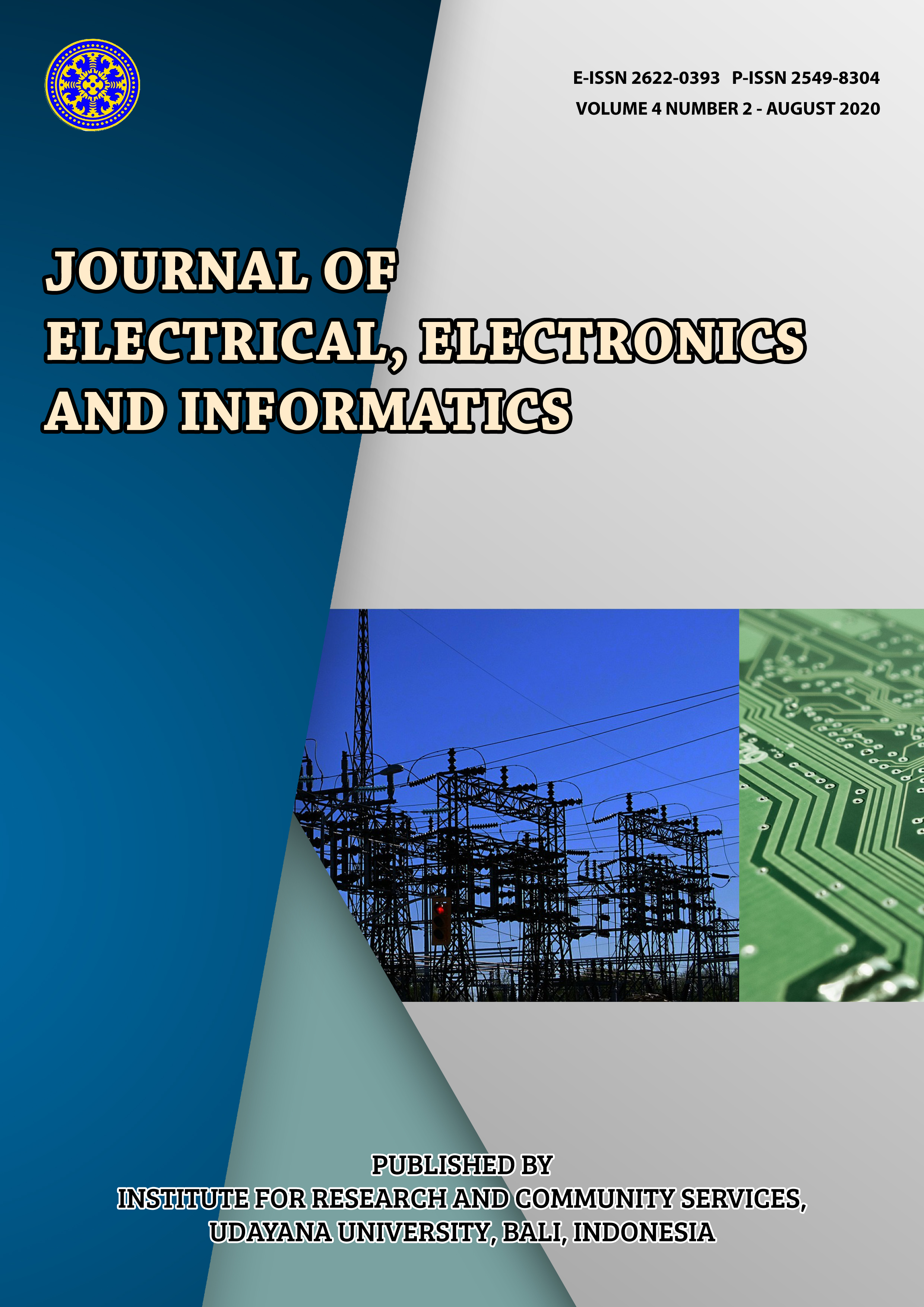Design of Orthogonal Variable Spreading Factor (OVSF) Performance Simulation Program in Multipath Fading Channels
Abstract
The characteristics of wireless channel are determined by multipath propagation. The transmitted signal will be scattered so that it produces fading. Fading influenced by multipath component will cause delay spread which damages the signal. Thus, spread spectrum technology is used by using a bandwidth that is greater than the original signal. The objective of this study was to determine the effect of the number of multipath components on orthogonal variable spreading factor (OVSF) codes on multipath fading channels viewed from values and Bit Error Rate (BER) graphs versus Energy Bits per Noise (Eb/No). This study would compare the performance of OVSF code communication system on multipath channels by varying multipath components of 4, 8, 12, 16 and the length of OVSF codes used of 16, 8 and 4. The simulation results showed an increase in BER values when the number of multipath components was added. The more the number of multipath components used, the more the number of reflected signals that will interfere with the desired signal in the receiver. The length of the OVSF code influences the performance of the OVSF code on the multipath fading channel, because each code has a different processing gain value that is affected by the length of the code used
Downloads
References
[2] T. S. Rappaport, Wireless Communications: Principles and Practice, 1st ed. New York: ieee, 1996.
[3] J. Meel. 1999.”Spread Spectrum”. De Nayer Instituut.
[4] R.C. Dixon, “Spread Spectrum System”, 2nd ed., Wiley, New York. 1984
[5] Le Liu ; F. Adachi “Chip-interleaved Multi-rate CDMA with 2-dimensional OVSF Spreading”. 2006 IEEE 63rd Vehicular Technology Conference. IEEE Xplore: 18 September 2006
[6] Wang Peng, Zhao Yu, Cao Dazhong. 2005. “EFFICIENT ALGORITHM OF OVSF CODES ALLOCATION FOR W-CDMA” IEEE Xplore : May 2005
[7] Deepak Kedia ; Manoj Duhan ; S.L. Maskara “Evaluation of correlation properties of Orthogonal spreading codes for CDMA wireless mobile communication”. 2010 IEEE 2nd International Advance Computing Conference (IACC)/ IEEE Xplore: 01 March 2010
[8] Ibrahim, Anwar A. “Accuracy of Bit Error Probability for W-CDMA System Using Code Tree”. Engineering, Technology & Applied Science Research Vol. 8, No. 2, 2018, 2834-2838.
[9] F.Adachi, M. Sawahashi, and H.Suda, “Wideband CDMA for next generation mobile communication systems,” IEEE Comm. Mag., vol. 36, pp.56-69, Sept.1998

This work is licensed under a Creative Commons Attribution-ShareAlike 4.0 International License.











